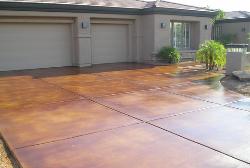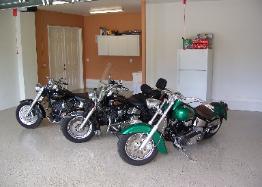


Click on any of
the photos for
more info on
each product.
the photos for
more info on
each product.
|
Designer Concrete Counters Of Florida 772 584 0061 |
Concrete Kitchen Counters Outdoor Kitchens Concrete Bathroom Vanities Concrete Flooring Overlays
Concrete Fireplace Surrounds Concrete Bistro Tables Concrete Driveway Stamping Epoxy Coatings
Concrete Fireplace Surrounds Concrete Bistro Tables Concrete Driveway Stamping Epoxy Coatings
Jupiter
How Jupiter Got Its Name
Jupiter is rich in history with the earliest known
records of the Jupiter Inlet dating to 1565.
When Spanish explorers first arrived in this area,
they found the Jega Indians living along the
banks of the inlet and Loxahatchee River. The
Indians called themselves the Jobe, so the
visitors named the river running into the inlet
the Jobe River, after the tribe. When English
settlers found the area around 1763, Jobe
sounded to them like the mythological god Jove,
or Jupiter, and the name Jupiter remains today.
How Jupiter Got Its Name
Jupiter is rich in history with the earliest known
records of the Jupiter Inlet dating to 1565.
When Spanish explorers first arrived in this area,
they found the Jega Indians living along the
banks of the inlet and Loxahatchee River. The
Indians called themselves the Jobe, so the
visitors named the river running into the inlet
the Jobe River, after the tribe. When English
settlers found the area around 1763, Jobe
sounded to them like the mythological god Jove,
or Jupiter, and the name Jupiter remains today.
Northern Palm Beach County consisting of Jupiter, Juno, and
Tequesta beaches along with the Loxahatchee River uniquely
combine rich history, culture, vibrant industry, and natural
beauty to provide an unsurpassed quality of life. Businesses
and residents who enjoy communities with "small town" feel
and the benefits associated with growing metropolitan areas
find these Northern Palm Beach County villages appealing.
Our shores comprise over 100 miles of unspoiled beach, river
and Intracostal waterfront for a variety of residential, leisure
and business opportunities. This is home to many full and part
time residents, as well as a growing destination for domestic
and international vacationers.
Enjoy everything our community has to offer, even if it’s just
for a short while. Join us in Northern Palm Beach County...
truly a little bit of paradise.
Tequesta beaches along with the Loxahatchee River uniquely
combine rich history, culture, vibrant industry, and natural
beauty to provide an unsurpassed quality of life. Businesses
and residents who enjoy communities with "small town" feel
and the benefits associated with growing metropolitan areas
find these Northern Palm Beach County villages appealing.
Our shores comprise over 100 miles of unspoiled beach, river
and Intracostal waterfront for a variety of residential, leisure
and business opportunities. This is home to many full and part
time residents, as well as a growing destination for domestic
and international vacationers.
Enjoy everything our community has to offer, even if it’s just
for a short while. Join us in Northern Palm Beach County...
truly a little bit of paradise.
History
No other location on the East Coast of the United States enjoys
the international reputation for guiding ships throughout the
centuries, as does the area now known as Jupiter. This location
protrudes further out into the Atlantic Ocean than any other
point along the Florida coast. For this reason it has guided ships
of all kinds since approximately 1550 to the present. Today, as
was done by early New World explorers, ships consider this an
important point when planning their routes to Central and South
America. The old maps found in Latin American seaports contain
this "Punta" or point clearly marked. This unique geographical
location has played a historical role throughout the centuries.
No other location on the East Coast of the United States enjoys
the international reputation for guiding ships throughout the
centuries, as does the area now known as Jupiter. This location
protrudes further out into the Atlantic Ocean than any other
point along the Florida coast. For this reason it has guided ships
of all kinds since approximately 1550 to the present. Today, as
was done by early New World explorers, ships consider this an
important point when planning their routes to Central and South
America. The old maps found in Latin American seaports contain
this "Punta" or point clearly marked. This unique geographical
location has played a historical role throughout the centuries.
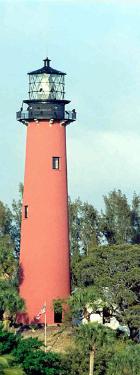
Dickinson Founders
The Jupiter area first came to widespread public attention when
Jonathan Dickinson, the namesake of Jonathan Dickinson State
Park, was shipwrecked on the shore of Jupiter and narrowly
escaped death at the hands of hostile Indians. In his journal
Dickinson chronicled his family's ordeal with the Jega Indians
and his 230-mile trek to safety in St. Augustine. Today, the
DuBois Museum in DuBois Park stands atop the Indian mound
described by Dickinson as the place where his family was held
captive.
The Jupiter area first came to widespread public attention when
Jonathan Dickinson, the namesake of Jonathan Dickinson State
Park, was shipwrecked on the shore of Jupiter and narrowly
escaped death at the hands of hostile Indians. In his journal
Dickinson chronicled his family's ordeal with the Jega Indians
and his 230-mile trek to safety in St. Augustine. Today, the
DuBois Museum in DuBois Park stands atop the Indian mound
described by Dickinson as the place where his family was held
captive.
Jupiter Inlet Lighthouse
In the 1800's Jupiter's most identifiable landmark,
the Jupiter Inlet Lighthouse, was erected. The
lighthouse stands 108 feet tall with 105 steps to
climb. The land that is now Lighthouse Park was
once a part of Fort Jupiter, a military installation
that was formed during the Seminole Indian Wars.
The Jupiter Inlet Lighthouse was renovated in 2000
and painted its original brick-red color.
In the 1800's Jupiter's most identifiable landmark,
the Jupiter Inlet Lighthouse, was erected. The
lighthouse stands 108 feet tall with 105 steps to
climb. The land that is now Lighthouse Park was
once a part of Fort Jupiter, a military installation
that was formed during the Seminole Indian Wars.
The Jupiter Inlet Lighthouse was renovated in 2000
and painted its original brick-red color.
Tequesta
Tequesta Indians
In 1955 a bridge tender was asked by Charles
Martyn to describe the area that is now the Village
of Tequesta. His reply was, "it's just a jungle."
Inspired by the bridge tender's description, Martyn
asked for a tour of the area. As the two men
traveled the inlet and Intracoastal by boat, Martyn
was intrigued by the beauty and potential of the
area. He bought 86 acres on Jupiter Island where he
developed the Jupiter Inlet Colony. While
excavating the site, Martyn's crew unearthed an
Indian mound filled with artifacts. Martyn's
interest in Indian history led him to research the
mound's contents. Later speculation was that the
mound belonged to an encampment of Tequesta
Indians encroaching on the native Jega Indians.
Martyn was convinced of this and named an area
he was developing west of the Intracoastal after the
Tequesta tribe. That development, now known as
the Tequesta Country Club, was later incorporated
as the Village of Tequesta.
Tequesta Indians
In 1955 a bridge tender was asked by Charles
Martyn to describe the area that is now the Village
of Tequesta. His reply was, "it's just a jungle."
Inspired by the bridge tender's description, Martyn
asked for a tour of the area. As the two men
traveled the inlet and Intracoastal by boat, Martyn
was intrigued by the beauty and potential of the
area. He bought 86 acres on Jupiter Island where he
developed the Jupiter Inlet Colony. While
excavating the site, Martyn's crew unearthed an
Indian mound filled with artifacts. Martyn's
interest in Indian history led him to research the
mound's contents. Later speculation was that the
mound belonged to an encampment of Tequesta
Indians encroaching on the native Jega Indians.
Martyn was convinced of this and named an area
he was developing west of the Intracoastal after the
Tequesta tribe. That development, now known as
the Tequesta Country Club, was later incorporated
as the Village of Tequesta.
A Great Place to Call Home
Tequesta started as one man's vision and has now
become a thriving village with miles of waterfront
property. From the serene Loxahatchee River to
the breath-taking oceanfront homes, residents are
drawn to Tequesta by natural beauty. A mix of
quiet single-family neighborhoods and gated
condominium complexes attract families, working
professionals and retirees to the Village. Tequesta
also has a wealth of cultural and recreational
activities for every age. The Village is home to the
Lighthouse Gallery and School of Art. There are
plenty of shops, stores and service businesses
located in Tequesta along with churches of various
faiths. New residents and visitors are greeted with
a strong sense of community and a genuine,
hometown friendliness.
Tequesta started as one man's vision and has now
become a thriving village with miles of waterfront
property. From the serene Loxahatchee River to
the breath-taking oceanfront homes, residents are
drawn to Tequesta by natural beauty. A mix of
quiet single-family neighborhoods and gated
condominium complexes attract families, working
professionals and retirees to the Village. Tequesta
also has a wealth of cultural and recreational
activities for every age. The Village is home to the
Lighthouse Gallery and School of Art. There are
plenty of shops, stores and service businesses
located in Tequesta along with churches of various
faiths. New residents and visitors are greeted with
a strong sense of community and a genuine,
hometown friendliness.
Juno Beach
Celestial Railroad
Back when Dade County covered 7,200 square
miles, from north of Jupiter to south of Biscayne
Bay, the tiny Village of Juno, located between the
Intracoastal Waterway and the Atlantic Ocean, was
the county seat. From 1890 - 1900 Juno served all
of Dade County, including its 720 residents, as
courthouse and county government. As the
southern most stop on the Celestial Railroad -
named for its stops at Juno, Venus, Mars and
Jupiter - Juno was Dade's link to Northern Florida.
Juno's short-lived notability ended when the
Celestial Railway was sold at auction in 1896, and
Miami later reclaimed the county seat in 1900. But
the beautiful little town by the sea would see a
rebirth as a resort and seaside community when
Henry M. Flagler fulfilled his mission to connect
Key West and the U.S. mainland with his Florida
East Coast Railway.
Today, the Town of Juno Beach, incorporated in
1953, has become an ideal vacation and retirement
retreat. With a year-round residency of about
2,200, Juno Beach's population swells to almost
three times that size in the winter months.
Cradled between the majestic and sparkling
Atlantic Ocean and the Intracoastal Waterway,
Juno Beach has spawned a mixture of single-family
homes and high-rise condominium complexes.
Within its 1.6 square-mile town limits are Juno
Beach Park, with a 300-foot guarded beach and
Loggerhead Park with an oceanside nature trail,
Marinelife Center, bike path, tennis courts and a
290-foot fishing pier. The town's close proximity
to U.S. Highway One and Interstate 95 provides
residents and visitors easy access to area shopping
and cultural activities.
Celestial Railroad
Back when Dade County covered 7,200 square
miles, from north of Jupiter to south of Biscayne
Bay, the tiny Village of Juno, located between the
Intracoastal Waterway and the Atlantic Ocean, was
the county seat. From 1890 - 1900 Juno served all
of Dade County, including its 720 residents, as
courthouse and county government. As the
southern most stop on the Celestial Railroad -
named for its stops at Juno, Venus, Mars and
Jupiter - Juno was Dade's link to Northern Florida.
Juno's short-lived notability ended when the
Celestial Railway was sold at auction in 1896, and
Miami later reclaimed the county seat in 1900. But
the beautiful little town by the sea would see a
rebirth as a resort and seaside community when
Henry M. Flagler fulfilled his mission to connect
Key West and the U.S. mainland with his Florida
East Coast Railway.
Today, the Town of Juno Beach, incorporated in
1953, has become an ideal vacation and retirement
retreat. With a year-round residency of about
2,200, Juno Beach's population swells to almost
three times that size in the winter months.
Cradled between the majestic and sparkling
Atlantic Ocean and the Intracoastal Waterway,
Juno Beach has spawned a mixture of single-family
homes and high-rise condominium complexes.
Within its 1.6 square-mile town limits are Juno
Beach Park, with a 300-foot guarded beach and
Loggerhead Park with an oceanside nature trail,
Marinelife Center, bike path, tennis courts and a
290-foot fishing pier. The town's close proximity
to U.S. Highway One and Interstate 95 provides
residents and visitors easy access to area shopping
and cultural activities.
Life Along the Loxahatchee River and Jupiter
Inlet - Yesterday and Today
Until 1929, when the Intracoastal Waterway was
deepened, the Jupiter Inlet went through natural
cycles of opening and closing. On several
occasions, when the inlet was blocked, area
residents took their shovels and dug small channels
to get the water flowing again. On one occasion in
1844, Captain Davis, a mail carrier, took several
men and dug a four-inch deep channel into the Inlet
before camping for the night. Several hours later
the Captain and his men were awakened by water
seeping into their camp. By the next day the Inlet
was nearly a quarter mile wide.
In the early 20th century, pine and cypress
logging, fishing, as well as pineapple, flower and
citrus farming were staples of the local economy.
The river provided access to the steamboats and
railcars that would ship these goods throughout the
country.
Until the early 1900's, it was common to see the
Jupiter School boat cruising the river, picking up
early settlers' children and delivering them to the
town dock for the walk to school. After school
these children could be found playing in the river
or collecting oysters from the many oyster beds.
Early pioneer life revolved around the Loxahatchee
River and the Jupiter Inlet in a very different way
than it does today. Early settlers relied on the
bounty of the Loxahatchee River and access to the
Atlantic to provide their living, while it is tourism,
boating and sportfishing that attract residents and
visitors to these bodies of water today.
Inlet - Yesterday and Today
Until 1929, when the Intracoastal Waterway was
deepened, the Jupiter Inlet went through natural
cycles of opening and closing. On several
occasions, when the inlet was blocked, area
residents took their shovels and dug small channels
to get the water flowing again. On one occasion in
1844, Captain Davis, a mail carrier, took several
men and dug a four-inch deep channel into the Inlet
before camping for the night. Several hours later
the Captain and his men were awakened by water
seeping into their camp. By the next day the Inlet
was nearly a quarter mile wide.
In the early 20th century, pine and cypress
logging, fishing, as well as pineapple, flower and
citrus farming were staples of the local economy.
The river provided access to the steamboats and
railcars that would ship these goods throughout the
country.
Until the early 1900's, it was common to see the
Jupiter School boat cruising the river, picking up
early settlers' children and delivering them to the
town dock for the walk to school. After school
these children could be found playing in the river
or collecting oysters from the many oyster beds.
Early pioneer life revolved around the Loxahatchee
River and the Jupiter Inlet in a very different way
than it does today. Early settlers relied on the
bounty of the Loxahatchee River and access to the
Atlantic to provide their living, while it is tourism,
boating and sportfishing that attract residents and
visitors to these bodies of water today.
Hi Jupiter residents! Epoxy floors are our
special of the summer.
special of the summer.

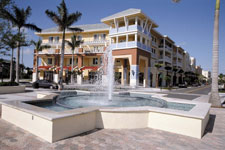
Northern Palm Beach County
Chamber of Commerce
800 North US Highway One
Jupiter, FL 33477
Chamber of Commerce
800 North US Highway One
Jupiter, FL 33477
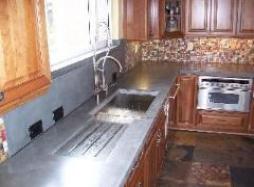
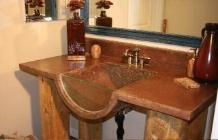

Stamped Concrete
Fireplace Surround
Fireplace Surround
| At "Designer Concrete Counters LLC FL." we specialize in custom one of a kind Concrete Countertop creations. Along with all facets of Decorative Concrete Coatings, Flooring Overlays, Concrete stamping, Acid Staining, Epoxy Floors Fireplace Surrounds, Driveways, Patio Furniture, Outdoor Kitchens and more. |

